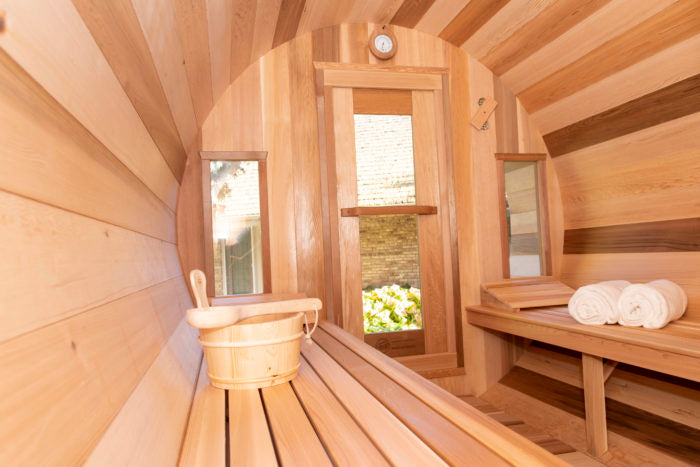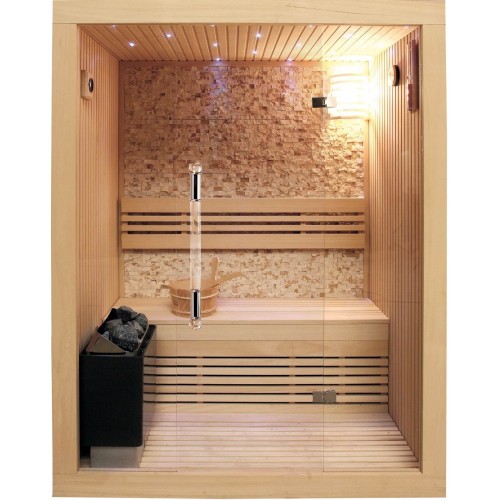Examine This Report on Traditional Sauna
Examine This Report on Traditional Sauna
Blog Article
The Best Strategy To Use For Traditional Sauna
Table of ContentsThe 7-Minute Rule for Traditional SaunaThe Only Guide for Traditional SaunaFacts About Traditional Sauna RevealedThe Basic Principles Of Traditional Sauna How Traditional Sauna can Save You Time, Stress, and Money.
A lot of the weight lost in a sauna is water loss and is re-gained upon rehydrating. Without a doubt sauna can be an essential part of a healthy weight loss program. To look at the differences between conventional and IR saunas, I will separate these into verifiable, theoretical, and fabricated differences.Thus, the best point in the saunawhich goes to the ceiling straight over the sauna heateris typically between 185 and 190 F. Claims that a standard sauna surpasses 200 F is just not true and not suitable for electric saunas sold in the US. The temperature level for a far-infrared sauna is generally established in between 120 and 140 F; nevertheless, unlike the conventional sauna, the goal in and IR room is not to accomplish a heat.
Due to this, the temperature distinction is virtually irrelevant, since extreme sweating causes both sauna types, but the method of heating the body is various. In an IR sauna the bather will certainly feel warm and will sweat profusely, yet at a lot lower temperatures. Traditional Sauna. Thus, if the objective is to spend longer periods of time in the sauna, the IR sauna is a great selection

Getting My Traditional Sauna To Work

When the high temperature level is achieved, the aspects cycle on and off to preserve the high temperature level. Traditional Sauna. The majority of traditional sauna users delight in putting water over the rocks to produce heavy steam to increase sauna moisture degrees. The advantages of putting water over the rocks consist of: making the area more comfy, dampening the nasal flows, and permitting the usage of aromatherapy by blending necessary oils with the water
In a far-infrared sauna, the heat waves penetrate the body to effectively warm the body and elevate the body core temperature. To attain this raised temperature level, Far-infrared emitters develop infrared power which is close to the exact same wavelength as that which the body normally emitsoften described as the "Important Range" of 7 to 14 microns), so the energy Check This Out is well obtained by the body.
When the power enters the body, it causes the body temperature level to boost and inevitably causes sweat. In an infrared sauna it is very important for the emitters/heaters to continue to be on virtually constantly. Since there is no mass of rocks to retain warmth, the sauna will certainly cool if the emitters turned off.
What Does Traditional Sauna Do?
As discussed over, the sauna bather in an official source infrared space intends to place himself in front of running emitters to get optimal take advantage of the heat. The home heating time for the 2 rooms can be really different, relying on how the areas are utilized. For a conventional sauna, a bather needs to enable 30-40 mins for the room to attain a preferred temperature level and to appropriately pre-heat the rocks.
A well constructed sauna will commonly achieve a temperature level of 150-160 F in regarding 30-40 mins. For hotter temperatures, the space might need to warmth for a longer period. When the area achieves set temperature level, the heating unit will certainly cycle on and off, generally running regarding 50% of the time. The shielded wall surfaces and the heated rocks will maintain the area warm and at steady temperature levels.

Typical saunas often tend to be bigger (thus utilize more electricity) than infrared saunas, although standard saunas are absolutely readily available in one and two individual dimensions. For a two-person conventional sauna, 5x6 or 5x7 size is most preferred. The leading bench can pleasantly seat 2 or three individuals and is likewise long enough to rest throughout the sauna session.
The 45-Second Trick For Traditional Sauna
The typical cost per kWH of power in the U.S. is about $0.11 - Traditional Sauna, so a 4.5 kW heating unit will certainly cost around $.50 to run for one hour, if the heating unit runs continually for one hour. Normally a sauna heater will run for 75% of the first hour and 50% of succeeding hours on considering that the elements cycle once the set temperature is attained
A 2 person far-infrared area is usually physically smaller sized than a standard sauna, frequently concerning 4' x 4' or smaller sized. The IR heating unit is normally 1.5-1.7 kW making use of a 120 volt 15 amp plug-in solution. Considering that the area can be used quicker than a sauna space, we will certainly think the room is used for to of an hour including warm up time.
There is a rarely discussed distinction in the social experience in between the 2 areas. While our society has actually shed a few of the social advantage of the typical sauna experience, it can be very socially gratifying. From household time in the sauna, to heart-felt conversations with substantial others, to sauna partiesthe typical sauna experience can bring about intimate mingling.
Traditional Sauna Fundamentals Explained
Many higher end infrared spaces include tinted light treatment, noise systems and full-glass fronts.
Report this page